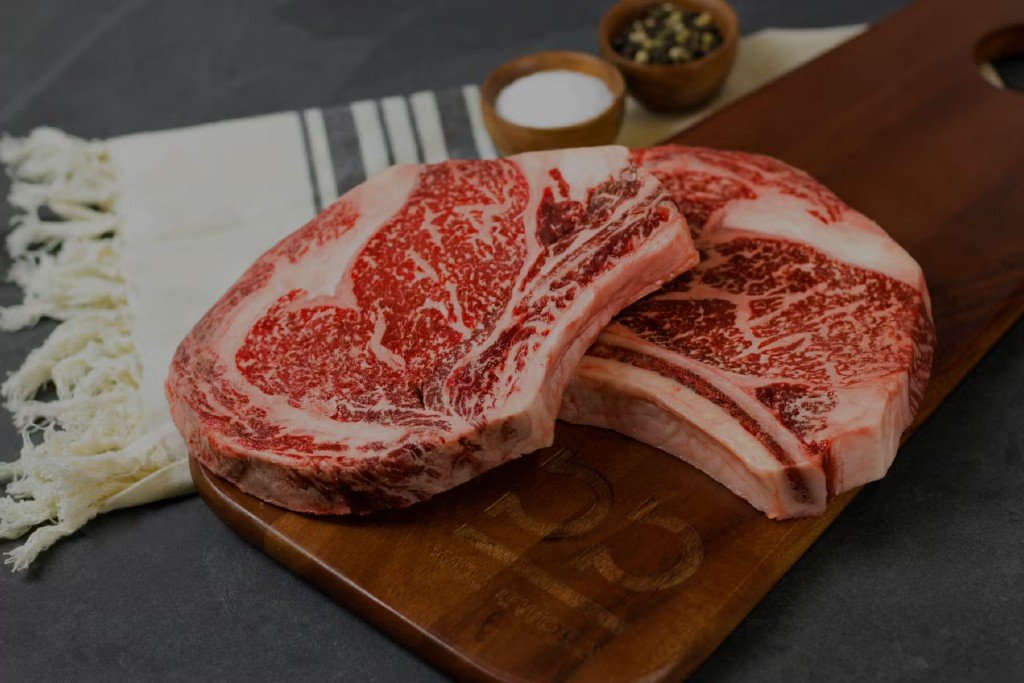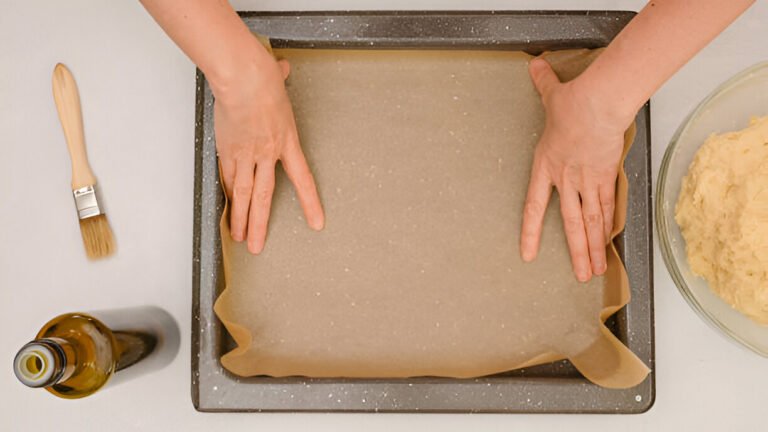How to Cut Ribeye Steak Against the Grain for Maximum Tenderness
Over the years, during countless cooking sessions in my kitchen, I’ve come to appreciate the small techniques that make a big difference—especially when it comes to steak.
One tip that’s completely transformed how I serve ribeye is learning to cut it against the grain. It’s not just a fancy culinary term; it’s a game-changer when it comes to tenderness and mouthfeel.
So, why does the way you slice a steak matter so much? Have you ever chewed through a beautifully cooked ribeye only to find it tougher than expected? The secret lies in understanding the grain—the direction of the muscle fibers—and slicing through them the right way.
In this article, I’ll walk you through exactly how to identify the grain in a ribeye steak and how to cut it properly. Whether you’re cooking for yourself or aiming to impress guests, this small trick will lead to juicy, tender results every time.
Understanding the Ribeye Cut
The ribeye steak is prized for its rich flavor, juicy texture, and beautiful marbling. Cut from the rib section of the cow, this steak is known for being both tender and bold, making it a favorite on grills and in gourmet kitchens.
There are several types of ribeye cuts to choose from:
- Boneless Ribeye – Easier to cook and slice, with uniform shape.
- Bone-in Ribeye – Retains more moisture and flavor during cooking.
- Tomahawk Ribeye – An extra-thick bone-in ribeye with a dramatic presentation.
What makes the ribeye stand out is its marbling—thin streaks of fat woven through the muscle. This fat melts as the steak cooks, creating a buttery, tender bite.
| Ribeye Cut | Flavor Intensity | Tenderness | Presentation |
| Boneless | High | Very High | Simple |
| Bone-in | Very High | High | Rustic |
| Tomahawk | Extreme | High | Showstopper |
Understanding these options helps you choose the right cut for your taste and occasion.
Complete Guide On Cutting Ribeye Steak Against The Grain

- Understand the concept: Cutting against the grain means slicing perpendicular to the direction of the muscle fibers. This technique shortens the fibers, resulting in a more tender and enjoyable eating experience.
- Identify the grain: Examine the ribeye’s surface to identify the muscle fibers’ direction. Look for lines or striations running across the meat. This visual cue will guide you in making the right cuts.
- Use a sharp knife: Ensure your knife is sharp for clean and precise cuts. A dull knife can tear the meat, compromising tenderness. Maintain a steady grip on the knife and let it work as you guide it through the meat.
- Begin with proper thickness: Cut the ribeye into steaks of suitable thickness, usually around 1 to 1.5 inches. This thickness allows for even cooking and easier handling during the slicing process.
- Slice against the grain: Once the steak is cooked to your desired doneness, locate the grain and begin cutting perpendicular to it. Use smooth, steady motions to create thin slices about ¼ to ½ inch thick. Maintain consistency in the thickness to ensure an even distribution of tenderness.
- Arrange and serve: Arrange the beautifully cut slices on a plate, showcasing their tenderness. Serve immediately to enjoy the optimal flavor and juiciness. But do you use rosemary or thyme for steak?
Why Is It Important To Cut Ribeye Against The Grain?
It is essential to cut ribeye against the grain because it enhances tenderness. By slicing perpendicular to the muscle fibers, we shorten them, resulting in a more tender eating experience.
Cutting against the grain makes chewing easier. It also ensures each bite is tender and enjoyable.
“I listen to my body. Some days all I want is a good steak, and others. I crave veggies and quinoa.”
– Tracee Ellis Ross, American Actress
How Do You Identify The Grain In A Ribeye Steak?
To identify the grain, closely examine the surface of the steak. Look for lines or striations that run across the meat. These lines indicate the direction of the muscle fibers.
You may also feel a slight resistance or texture change along the grain by running your fingers lightly over the surface.
“Unlocking the tender perfection of ribeye steak lies in cutting against the grain. We shorten the muscle fibers with each precise slice, unleashing a cascade of melt-in-your-mouth tenderness.”
– Eat Gap Restaurant & Food Advice
You can use visual and tactile cues to tell the grain’s direction. This helps you make precise cuts against the grain, which unlocks the steak’s best tenderness.
| Read: What is the Best Substitute for Dried Porcini Mushrooms? |
What Tools & Techniques Should You Use To Cut Ribeye Against The Grain?
- Sharp knife: A sharp chef’s knife or carving knife is essential for clean and effortless cuts. The sharpness allows for smooth slicing without tearing the meat, ensuring optimal tenderness. You may also want to check out the pricing differences between boneless ribeye and bone-in here.
- Proper grip: Hold the knife comfortably, ensuring control and stability throughout the cutting process. This allows for accurate cuts and reduces the risk of accidents.
- Perpendicular angle: Position the knife perpendicular to the grain of the ribeye. This ensures that each slice is cut directly against the grain, maximizing tenderness.
- Smooth and steady motion: Use smooth and steady motions to guide the knife through the steak. Avoid applying excessive pressure, as it may crush the meat fibers or result in uneven cuts.
- Consistent thickness: You should aim for consistent thickness when cutting the slices. This helps maintain even cooking and ensures an enjoyable eating experience.
What Are Some Tips for Serving Beautifully Cut Ribeye?
- Plate presentation: Arrange the sliced ribeye on a clean, attractive plate. Consider using a contrasting background that highlights the rich color of the meat.
- Artful arrangements. Arrange the slices in a nice pattern. Overlap them a bit for a welcoming look. This showcases the tenderness and precision of your cuts. But should you trim the fat off a New York strip steak?
- Garnish with herbs: Add a touch of freshness and color by garnishing the plate with a few sprigs like parsley or rosemary. This not only enhances the visual appeal but also complements the flavors of the steak.
- Sauce or jus: Accompany the ribeye slices with a flavorful sauce or jus that complements the meat. Drizzle it artfully over the slices or serve it in a separate dish for dipping.
- Sides and accompaniments: Complete the meal by serving the beautifully cut ribeye [1] alongside delicious sides such as roasted vegetables, mashed potatoes, or a fresh salad. Ensure that the sides enhance the flavors of the steak without overshadowing it.
- Timing is critical: Serve the beautifully cut ribeye immediately after slicing to retain its juiciness and tenderness. This ensures that each bite delivers the optimal flavors and textures.
FAQs on Cutting Ribeye Steak Against the Grain
Does cutting ribeye against the grain change its flavor?
No, it mainly impacts the tenderness and texture, not the flavor.
What are the common mistakes to avoid when cutting ribeye against the grain?
Common mistakes to avoid when cutting ribeye against the grain include using a dull knife, cutting too thick or too thin slices, and failing to accurately identify the grain’s direction. Maintaining a sharp knife, consistent thickness, and correctly identifying the grain is vital to achieving perfectly cut ribeye slices with optimal tenderness and texture.
Final Thoughts
Mastering the art of cutting ribeye steak against the grain is essential for achieving each bite’s utmost tenderness and flavor.
You can navigate this process with confidence. Start by understanding the concept. Then, identify the grain. Finally, use the right tools and techniques.
Remember to use a sharp knife, maintain a perpendicular angle, and employ smooth, steady motions.
Finally, arrange the nicely cut slices. Add appealing sides and garnishes to enhance the presentation.
References:
- https://www.thespruceeats.com/what-is-a-ribeye-steak-995257







